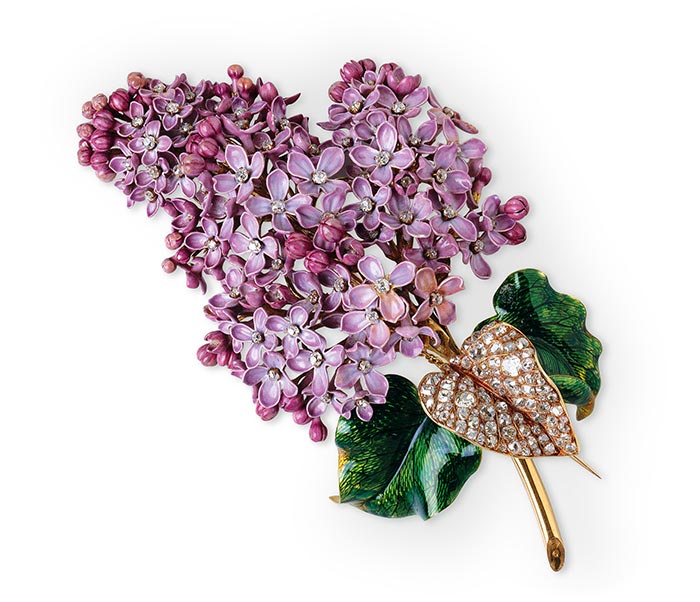Business
11 July 2017
Share
In bits
Contrary to popular thought, the more precious the materials with which a jewelry piece is made, the less likely it will come through time intact.
Unlike a painting or wooden chest of drawers, the materials in a precious jewelry piece each have an intrinsic value. The stones may be removed and the gold melted down to be sold in the aftermath of a divorce, bankruptcy or a burglary, but not only …
The vagaries of current fashion
No, precious jewels are not spared from fashion and this is not new: we know that the Empress Eugenie spent her time disassembling her belts, tiaras and bracelets to bring them up to the taste of the day. All heiresses such as Barbara Hutton or Daisy Fellowes brought their precious jewels up to date. To symbolize this phenomenon and the obsolescence of the engagement ring with a single diamond she had just inherited, the creator Agathe Saint-Girons transferred the stone to a necklace along side amethysts and aquamarines. And humorously baptized it, “My God, what shall I do with my grandmother’s engagement ring?”
The vicissitudes of history
The jewels of the Crown of France were auctioned in 1887 by the very young Republic, causing the loss of many masterpieces. For an easy sale, ornamentation like currants leaves were separated and the decoration disassembled. The eventual purchasers, Boucheron, Bapst Frères and Tiffany completed the process by dismantling what remained to reuse the stones. The jewels of the Prussian aristocrats were also sacrificed to support the war effort during Napoleon’s invasion of the country. In exchange, they were given pieces made of black cast iron from Berlin that were worthless, such as those that can be seen in the “Medusa” exhibition. In the same way, many plastrons, sumptuous egrets and Indian arm bracelets only remain today in pictures: after India’s independence, the maharajas sold them off to Western jewelers in order to cover expenses.
The question of value
When 80-90% of its value lies in the materials, a jewelry piece has very slim chance of surviving. Thus, the gold necklace, the ring adorned with an exceptional center stone or the row of diamonds are the first to be surrendered in hard times. This is what happened to Doris Duke’s Cartier necklace; all that was left of it at the 2004 Christie’s sale was the platinum skeleton! After just a few years, the purchaser managed to replace the diamonds, which is not always possible. Cartier never managed to find an equivalent of the 234-carat yellow diamond from De Beers, which was missing from the Patiala necklace, and so had to make do with zirconium oxide.
A way to get a round it…
… it’s better to settle for a highly creative piece, one well worked, with filigree, openwork and paved with micro-diamonds. It’s more likely to be handed down from generation to generation because the design and time spent by the artisan-jeweler represents 50 to 70% of its value. The nineteenth-century Mellerio peacock or lilac brooches, presented in recent exhibitions in Paris, have survived thanks to the ultra-meticulous execution of their feathers, the realism of their delicate mauve enamel micro-flowers that seem about to quiver at the slightest breeze. Despite their inestimable value, once disassembled and melted down, these brooches would yield nothing. Not a penny.















